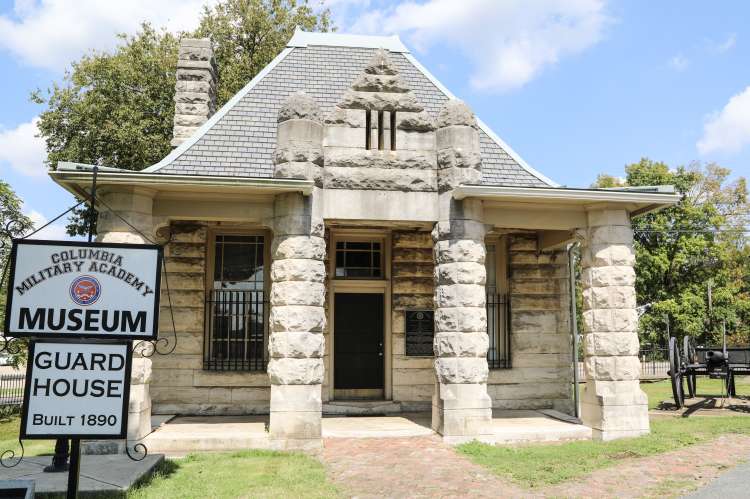-
Overview


The Columbia Military Academy Museum showcases the history of this arsenal turned academy from its beginnings in 1885. The museum is housed in what was once The Guard House. It was actually used as a brig during the time that troops were quartered there. HISTORY The government spared no labor nor expense in developing and landscaping the Columbia Arsenal after it was signed into creation in 1888 by President Grover Cleveland. Construction actually began during President Benjamin Harrison's administration. The U. S. Corps of Engineers and architects concentrated their skills on this project. They laid out drives and walks, graded parade grounds, included flower beds, shrubbery, impressive entrances and even a bubbling fountain. The whole of the property, some sixty-seven acres was enclosed by an iron fence built upon a foundation of the same Bowling Green stone which had been used for the four major buildings. The cost of this fence ran over $20,000. The remaining five buildings were of brick. The overall cost of the project ran well over $500,000, a princely sum in those days. During President William McKinley's administration the arsenal became a training facility and quarters for Spanish-American War troops until about 1900, when the Chief of Army Ordnance recommended that the Arsenal be closed. After the war the arsenal was declared surplus property and influential people within the state sought an adaptive use for the buildings and grounds so the promotion of a military school began. In June 1904 Company K, 16th Infantry formerly abandoned the arsenal and the property was received by the school. The Columbia Military Academy opened for classes on August 28,1905. Columbia Military Academy was a class "M" Military School until 1918, when a Junior ROTC Unit was added. In 1947 a Senior ROTC Unit was installed and remained until June 1, 1978 when enrollment dropped below the minimum requirement for an ROTC program. The climate for boarding schools and their popularity declined sharply in the early 1960's. Communities all over the south began establishing private day schools, and the more expensive boarding schools faltered. Local leadership in Columbia wanted CMA to become a day school also. In an effort to build enrollment CMA began admitting female day students in 1969. The undergirding which had been in place since the school formed in 1904 was removed in 1972 when Congress relinquished its interest in the property and the whole facility was deeded to the Operating Board. When debts reached over $850,000.00 the board simply turned the property over to a group of people formed from the Churches of Christ in the Columbia area and Columbia Academy began.
- City of Columbia
- 700 N. Garden St.
Columbia, TN 38401
Cookies are used for measurement, ads and optimization. By continuing to use our site you agree to our privacy policy.

